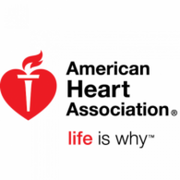 John Singleton, the Oscar-nominated director and screenwriter behind films like "Boyz n the Hood" and "Poetic Justice," has died after being taken off life support following a stroke this month, his spokesperson Shannon Barr told USA TODAY Monday. He was 51. Stroke and high blood pressure: Stroke is a leading cause of death and severe, long-term disability. Most people who’ve had a first stroke also had high blood pressure (HBP or hypertension). High blood pressure damages arteries throughout the body, creating conditions where they can burst or clog more easily. Weakened arteries in the brain, resulting from high blood pressure, put you at a much higher risk for stroke — which is why managing high blood pressure is critical to reduce your chance of having a stroke. What happens when you have a stroke? A stroke occurs when a blood vessel to the brain is either blocked by a clot (ischemic stroke) or bursts (hemorrhagic stroke). When that happens, part of the brain is no longer getting the blood and oxygen it needs, so it starts to die. Your brain controls your movement and thoughts, so a stroke doesn't only hurt your brain — it can threaten your ability to think, move and function. Strokes can affect language, memory and vision. Severe strokes may even cause paralysis or death. A majority of strokes are ischemic strokes— caused by narrowed or clogged blood vessels (atherosclerosis) in the brain that cut off the blood flow to brain cells. (Cerebral thrombosis and cerebral embolism are ischemic strokes.) Watch an interactive animation of an ischemic stroke. A much smaller percentage of strokes are hemorrhagic strokes (cerebral hemorrhages) that occur when a blood vessel ruptures in or near the brain, resulting in a subarachnoid hemorrhage (SAH) on the surface of the brain or intracerebral hemorrhage (ICH) deep within the brain. View a detailed animation of a hemorrhagic stroke. FAST: Use the letters in "F.A.S.T." to spot stroke signs and know when to call 9-1-1. Face Drooping: Does one side of the face droop or is it numb? Ask the person to smile. Is the person's smile uneven or lopsided? Arm Weakness: Is one arm weak or numb? Ask the person to raise both arms. Does one arm drift downward? Speech: Is speech slurred? Is the person unable to speak or hard to understand? Ask the person to repeat a simple sentence. Time to Call 9-1-1 If the person shows any of these symptoms, even if the symptoms go away, call 9-1-1 and get them to the hospital immediately.
0 Comments
Leave a Reply. |

